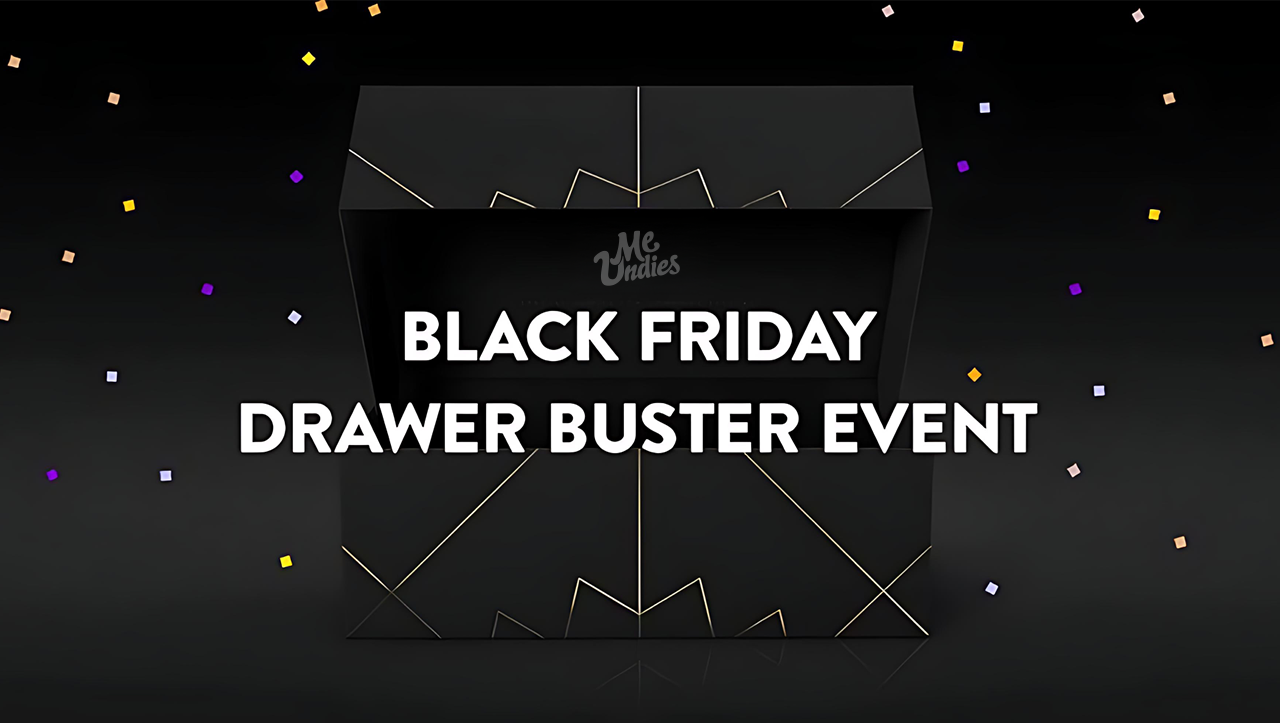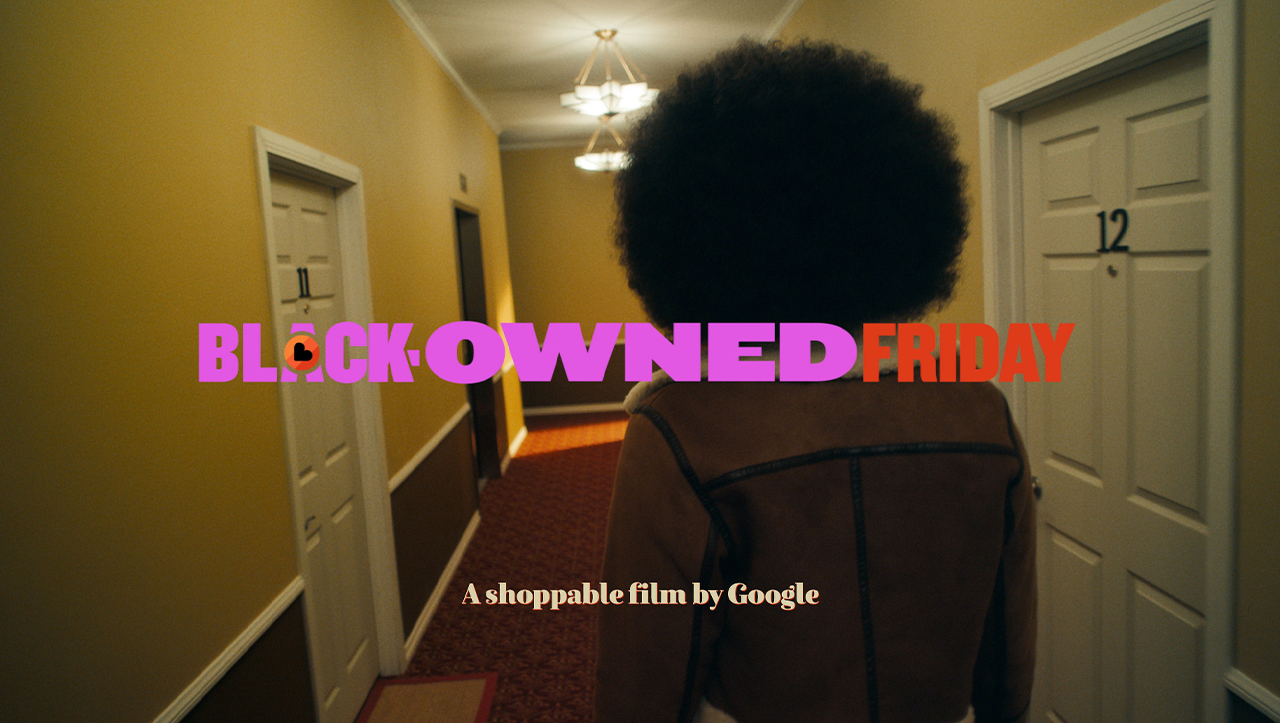Top Black Friday Marketing Ideas from Campaigns that Actually Didn't Send Us to Sleep
In 30 seconds:
Black Friday isn't just about slashing prices: it's a £7.1 billion+ opportunity (that's just the UK!) to create marketing strategies that people actually remember.
UK consumer finances are improving, which paints a positive picture -- but "discount fatigue" and a Mintel finding that UK shoppers are starting gift shopping later means brands need to get creative to cut through with the noise Black Friday deals.
A discount race to the bottom won't excite like it once did. So, we've rounded up the brands that got Black Friday right, with BFCM marketing ideas you can actually learn from and apply.
Black Friday in the UK is still a blockbuster, with online retailers projected to hit £152 billion in 2025, making up 38% of total retail sales even though growth is cooling to about 3.6%. Last year, shoppers leaned heavily on last chances deals: It was more important than ever, and average discount types sat in the 17-20% range for many brands.
But here's what most agencies won't tell you: consumers are getting good at spotting Black Friday deals without real value, and many aren't impressed anymore. Just over half (≈50%) trust what online retailers promise during the Black Friday period, while 16% say they hardly ever do. Meanwhile, almost 3 in 5 UK shoppers expect their shopping season spend in 2025 to stay the same or fall compared to 2024.
That's not consumer fatigue. That's your customers telling you they're bored of being sold to the same way everyone else is selling. In this article, we'll show you the Black Friday marketing campaigns that actually understood this, and what you can steal from them.
Tactic 1: Go against the grain
Patagonia: "Don't Buy This Jacket"
The Campaign: In 2011, Patagonia ran a full-page ad in The New York Times during the Black Friday sales telling people: "Don't Buy This Jacket." Instead of giving away deals, they broke down the environmental cost of making it, gallons of water, pounds of CO₂, and waste.
Why it worked: While every other outdoor brand was screaming about percentage off, Patagonia told their customers to think harder about whether they needed the jacket at all. It cemented the brand's activist identity and sales still rose by 30% because - and this is the uncomfortable truth most brands ignore - people don't actually want you to beg them to buy from you. They want to believe you stand for something that matters more than their money.
What you can actually do with this:
Stop treating Black Friday like you're desperate. If your brand has convictions worth talking about, use the biggest shopping weekend of the year to prove it.
Realise that surprising your audience works better than shouting louder than everyone else.
Think beyond the weekend. Patagonia didn't just run a campaign; they reinforced what their customers already believed about them. If your Black Friday marketing contradicts everything you say the other 51 weeks of the year, that's not strategy, that's confusion.
Cards Against Humanity: The price hike paradox
The Campaign: On Black Friday 2015, Cards Against Humanity sold... nothing. Their website listed just one $5 option with no product in return, and more than 11,000 customers still paid, generating around $71,000. It was a tongue-in-cheek Black Friday marketing tactic that mocked the traditional lines while proving their target audience would happily buy into the joke.
Why it worked: Because Cards Against Humanity understood something most brands don't: their customers aren't idiots. The stunt made worldwide headlines, created massive social media conversation, and cost basically nothing to execute. More importantly, it proved the company would rather mock consumerism than participate in it - which is exactly what their audience wanted to see. The campaign wasn't about revenue; it was about demonstrating that the brand's personality isn't just marketing talk.
What you can actually do with this:
Don’t be afraid of alienating people who were never going to buy from you anyway.
Recognise that weirdness spreads faster than discounts. Thousands of brands offered better deals that Black Friday. None of them got this much press coverage.
Understand that if your brand personality is just a veneer you apply on social media, your audience already knows. Real brand identity shows up in what you do, not just what you say.
The Ordinary: Website Shutdown
The Campaign: On Black Friday, while competitors filled inboxes with "last chance" discounts, The Ordinary did the opposite: they shut their online and physical stores. No Black Friday deals, no flash sales, no hype. Instead, they reminded customers that their skincare is already priced fairly every single day, and they weren't going to join the race to the bottom just because it was November.
Why it worked: The Ordinary built their entire business model on transparent pricing and no-nonsense formulations. Suddenly slashing prices on Black Friday would have told customers the’d been bullshitting. By staying closed, they proved their pricing philosophy wasn't marketing spin. Their customers didn't feel like they'd been missing out on deals; they felt vindicated for choosing a brand that meant what it said.
What you can actually do with this:
Question whether participating in Black Friday actually makes sense for your brand. Not every business model benefits from training customers to wait for discounts.
Realise that doing nothing can generate more attention than doing what everyone else does.
Stop treating Black Friday like it's mandatory. If heavy discounting contradicts your value proposition, stay well away.
Tactic 2: Make shopping an event
MeUndies: The Facebook Live Party that got people buying
The Campaign: Instead of sending another Black Friday promotion by email, MeUndies hosted a two-hour Facebook Live party with a DJ and dance contests. As more people tuned in, the brand unlocked deeper exclusive discounts.
Why it worked: The live stream pulled in 13,300 views and 5,998 engagements, with a 25% conversion rate, 13 times higher than their usual Facebook average. The fun experience went viral, reaching 660,000 people, more than double their follower base during the holiday shopping season. What makes this interesting isn't the numbers - it's that MeUndies recognised their customers weren't sitting around waiting to be sold underwear. They needed a reason to pay attention, and "another email about 20% off" wasn't it.
What you can actually do with this:
Treat attention like the scarce resource it actually is. If you're not offering something genuinely different, why would someone bother paying attention?
Build genuine tension into your offers rather than just slapping a countdown timer on everything. MeUndies made people want to stick around to see what happened next.
Understand that shareability matters more than reach when everyone's competing for the same eyeballs. One person sharing your Facebook Live to their mates is worth more than 1,000 people scrolling past your Instagram ad.
Samsung Australia: The reverse auction
The Campaign: Instead of throwing prices upfront, Samsung Australia let customers watch them fall. Their "reverse auction" started at full retail price and dropped in real time until every product was gone or hit the lowest price of one dollar.
Why it worked: Over 50,000 shoppers joined in, many securing deals at nearly half the retail price. What Samsung understood is that shopping isn't purely rational. People don't just want a good deal; they want the story of how they got it. The reverse auction gave them both: actual savings and the thrill of timing it right. That emotional investment is what turns customers into people who tell their friends about your brand.
What you can actually do with this:
Stop assuming the only variable that matters is the final price. How people feel about getting that price determines whether they'll remember you.
Note that creating genuine uncertainty is more powerful than manufactured urgency.
Think about Black Friday as theatre, not just commerce. The brands people remember aren't necessarily the ones with the lowest prices; they're the ones that made the shopping experience itself worth talking about.
Tactic 3: lead with purpose
Puresport: Empty boxes, full scale impact
Instead of filling influencer mailers with gift sets, Puresport sent out 500 empty boxes. Recipients were asked to fill them with unused gifted items for donation to Greenhouse Sports charity.
Why it worked: It flipped the influencer playbook by acknowledging what everyone in the industry already knows but rarely admits: influencers get sent so much free product that most of it goes unused. Instead of pretending this wasn't happening and sending more stuff, Puresport turned the excess into impact. That honesty resonated because it acknowledged reality rather than participating in the fantasy that one more PR package was going to change anyone's life.
What you can actually do with this:
Stop pretending the way your industry works is somehow more noble than it actually is. Puresport didn't lecture anyone about overconsumption; they just offered a solution.
Understand that giving influencers a genuinely interesting story to tell is valuable. The empty box campaign gave creators actual content, not just another thing to photograph.
Recognise that purpose-driven marketing only works when it acknowledges an uncomfortable truth. If your campaign could be run by any brand in any industry, it's not purpose-driven, it's just purpose-themed.
Tactic 4: Make people work for it
Pantee: Password-protected shopping
The Campaign: Instead of opening their Black Friday discount to everyone, underwear brand Pantee locked their e-commerce behind a password. Only email subscribers got the code, giving them early access and first pick of new products.
Why it worked: This wasn’t about trying to reach as many people as possible. Pantee recognised not everyone is their customer, and trying to sell to everyone means you end up meaning nothing to anyone. By making their sale exclusive to their community, they rewarded people who actually cared. The result was a stronger relationship with the customers who mattered.
What you can actually do with this:
Question whether opening your doors to everyone actually serves your business.
Stop treating FOMO like a dirty tactic and start recognising it as honest communication.
Understand that your subscribers are worth more than random website visitors, then actually treat them that way. Most brands claim their email list is valuable, then give exactly the same offers to everyone who shows up. That's ridiculous.
Tactic 5: Play the long game
Barnes & Noble: Half a million signed books
The Campaign: Barnes & Noble swapped discounts for desirability with its annual "Signed Editions" programme, offering more than 500,000 books autographed by over 100 authors, from David Baldacci to Taraji P. Henson.
Why it worked: The programme recognises something the publishing industry often forgets: readers don't just want books cheaper, they want books that feel special. By offering signed editions, Barnes & Noble gave customers something they literally couldn't get anywhere else, regardless of price. Amazon might be able to undercut them on cost, but they couldn't replicate the experience of owning a book signed by an author you admire.
What you can actually do with this:
Stop competing on price when you could compete on things your competitors can't easily copy.
Understand that "exclusive" doesn't mean "expensive"—it means "unavailable elsewhere."
Recognise that behind-the-scenes content can be as valuable as the offer itself. Barnes & Noble shared videos of authors signing books, which gave fans both the end product and the story of how it came to exist.
Google: Black-Owned Friday
The Campaign: Google turned Black Friday into "Black-Owned Friday," an initiative spotlighting Black-owned businesses during the holiday season. They built interactive tools and creative assets across multiple channels to help shoppers discover and support underrepresented brands.
Why it worked: Because Google connected shoppers with thousands of Black-owned businesses through their platform, which created genuine social impact whilst reinforcing their positioning around diversity and access to information. What makes this different from most purpose-driven marketing is that Google actually used their unique advantages - search infrastructure, ad tools, mapping - to solve a real problem. They didn't just talk about supporting Black-owned businesses; they built the tools to make it easier.
What you can actually do with this:
Stop treating purpose-driven marketing like it's separate from what your business actually does. Google's campaign worked because it leveraged their core product.
Recognise that consumers increasingly expect brands - especially large ones - to use their platforms for more than profit.
Understand that social impact campaigns only land when they acknowledge systemic issues rather than treating charity like a PR opportunity. Google didn't just donate money to Black-owned businesses - they addressed the visibility problem that makes it harder for them to compete in the first place.
Why these tactics actually work
Most marketing psychology sections in articles like this cherry-pick research to justify whatever the brand was already planning to do. We're not going to pretend we're above that - these studies are here because they support the campaigns we've shown you. But they're worth reading because they explain why contrarian tactics work when safe approaches don't.
Research in the Journal of Consumer Research shows customers reward brands that act consistently with their principles. That sounds obvious until you realise how many brands talk about sustainability then push overconsumption, or claim to value customers then treat Black Friday like a chance to shift stock they couldn't sell at full price. The campaigns that worked (Patagonia, The Ordinary) succeeded because they didn't ask customers to ignore the contradiction between values and actions.
The "cool" factor matters too, which The Atlantic argues often comes from non-conformity. Cards Against Humanity and Pantee worked specifically because they did the opposite of what everyone else did. That's not profound - it's just pattern recognition. When 10,000 brands shout "SALE," the brand that whispers "actually, maybe you don't need this" gets attention purely by contrast.
Experiences stick where discounts fade because of something called the "peak-end rule" - we remember the most intense moment and the ending of experiences more than the totality. MeUndies and Samsung engineered those peaks deliberately. The important bit isn't that experiences matter (everyone knows that); it's recognising that most brands treat Black Friday like a transaction when they could treat it like theatre.
Finally, social identity theory explains why campaigns like Puresport's donation initiative and Google's Black-Owned Friday succeeded: people define themselves by the groups they join and the causes they support. When brands link shopping to community or purpose, they're not just selling products - they're offering identity. That sounds manipulative, but it's only manipulative if the purpose is fake. When it's real, it's just giving customers what they actually want: a reason to feel good about where they spend their money.
Black Friday ≠ Bland Friday
Black Friday 2025 won't look like 2024, or any year before it. Earlier this year, a consumer report found that over half of consumers are now using generative AI to inform purchases - and that number is only going to rise. Furthermore, an Accenture report found 75% of active AI users say they are open to letting an AI-powered personal shopper buy on their behalf. Add to the fact that 8 out of 10 Brits mistrust Black Friday offer pricing, and what you're looking at isn't consumer fatigue, it's customers actively looking for reasons not to buy from brands that bore them.
The brands that win in 2025 won't be the ones with the biggest discounts. They'll be the ones that recognise their customers are smarter than most marketing gives them credit for, and create campaigns that respect that intelligence. The question isn't "How much should we discount?" but "What can we do that no one else is doing, and why would our customers care?"
If you want marketing that doesn't just tick the Black Friday box but actually makes your customers stop and pay attention, get in touch. At Bottle, we specialise in the kind of integrated thinking that treats social platforms as search engines, understands how PR feeds SEO, and recognises that the best creative ideas come from actually understanding how modern discovery works—not just following what everyone else did last year.











